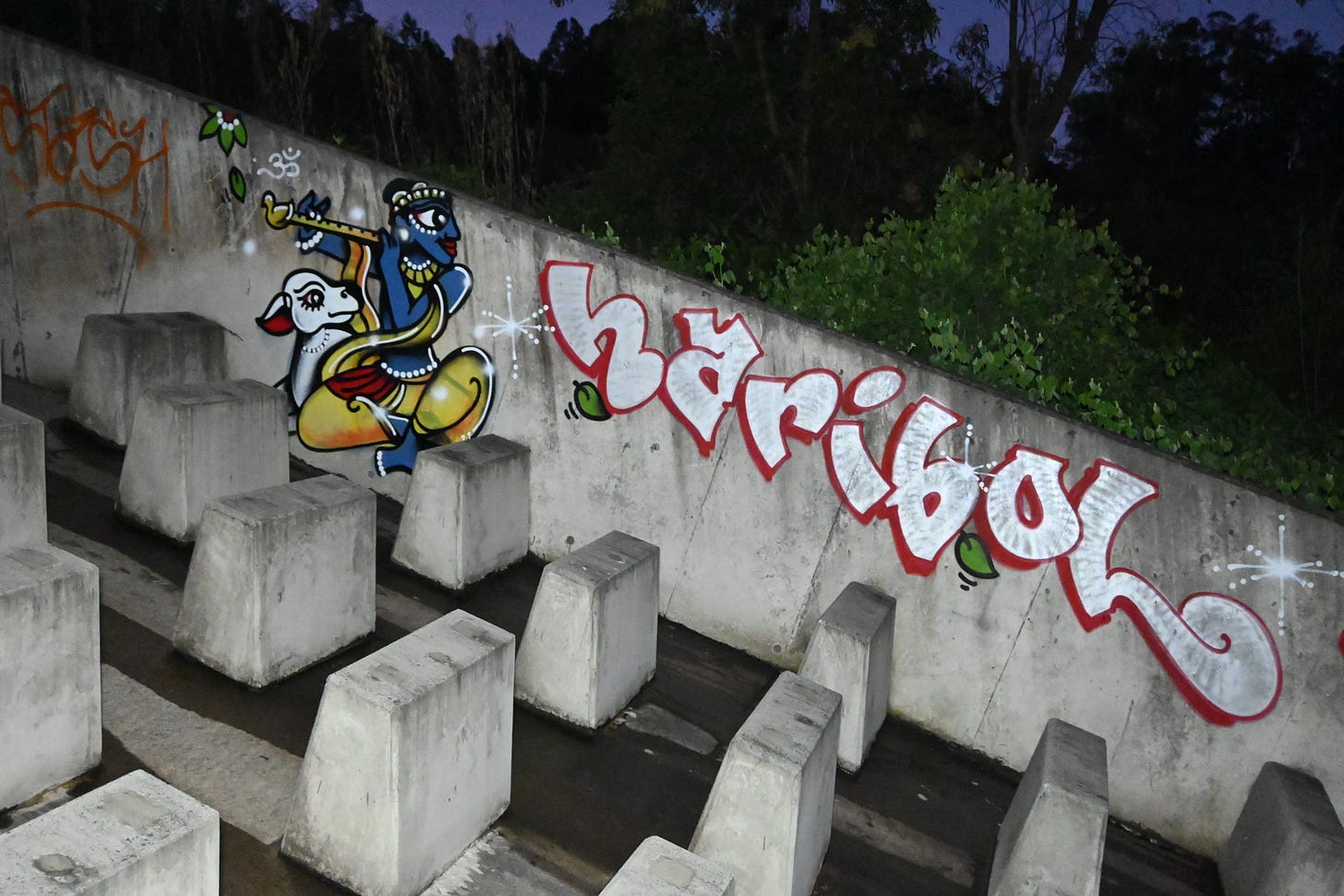Graffiti & Bhakti: The Three Phases of Style, The Three Stages of the Souls Journey Home
My Journey Through Graffiti and The Parallels in Bhakti
My Journey Through Graffiti and The Parallels in Bhakti
Phase 1: The Toy - Raw and Funky
When I first started graffiti, I was a toy. I didn’t know the rules, I just knew I wanted to create. It was raw, free, and unrefined. My pieces were funky—lacking any real structure—but they were alive, and I was having fun. Looking back, I think those were some of the best moments of my artistic journey. There was so much freedom in the mess. This stage lasted from the moment I started Graffiti until the moment I got serious about it in 2012
.
Phase 2: The Learning Curve - Gaining Discipline
But like anything, I started to grow. I wanted to get better, so I started learning the rules: letter structure, color theory, how to make my work cleaner and more readable. I thought that was the key to improvement. But as I tried to get my work clean and up to the standard I saw around me, something was off. The fun, the freedom, the spontaneity—I lost it. My pieces became stiff, mechanical. They were almost technically on point structurally, but they lacked movement, flow and funk! This period lasted from 2012 to 2025
.
Phase 3: A Subtle Discovery - Bringing Back the Funk with Mastery
And here’s where it gets interesting—I’ve come to realize it’s not just about getting clean. It’s about finding a balance between structure and play. I’ve been discovering the tip of what I’d call the uttama phase in my art. Not that I’m there yet, but something feels different. I’m starting to bring spontaneity back into my pieces, but now, I have the discipline to hold it all together. It feels like I’m just beginning to scratch the surface of where this balance lives.
I’m still learning, but there’s something freeing about it. The more I let go and allow myself to be spontaneous, the more the flow comes back into my work. It’s like a little dance—funky, but grounded. It’s humbling to see that I’m discovering the tip of what it means to bring both freedom and discipline into one piece.
The Three Stages of Bhakti: A Journey Toward Spontaneity
In bhakti, the path of devotional service also unfolds in three stages:
Kaniṣṭha (Beginner): At this stage, the devotee is full of enthusiasm but lacks deep understanding or discipline. There’s excitement for the process, but it’s often unrefined and erratic. The devotion is there, but the focus and structure are still developing. It’s a time of discovery, where the devotee is learning and experimenting, but still finding their footing.
(Parallel to: The “toy” phase in graffiti—raw, unrefined, and full of energy, but lacking structure or mastery.)Madhyama (Intermediate): In this phase, the devotee starts to apply deeper knowledge and discipline. They begin to understand the importance of following principles and regulations, and the process becomes more structured. However, while there’s growth, the spontaneity of the early stage often fades as effort and routine take precedence. The joy can sometimes feel lost in the process, but it’s a necessary stage for building a solid foundation.
(Parallel to: The stage where you focus on technique and clean style in graffiti—discipline is introduced, but the flow and fun fade as you focus on the rules.)Uttama (Advanced): At this stage, the devotee has mastered the practice and is no longer bound by rigid rules. They can perform devotional service with full spontaneity, free from the constraints of overthinking or effort. The principles are so deeply ingrained that the devotee’s actions flow naturally from the heart, and their devotion becomes effortless. There’s a deep connection, both to the practice and to the Divine, where devotion is not a task, but a natural expression of love.
(Parallel to: Reaching the stage in graffiti where you combine discipline with spontaneity—the structure and mastery are second nature, and now the flow, funk, and freedom return.)










There’s such a raw beauty in the way you’ve tied the chaos of graffiti to the inner chaos of bhakti. That first phase, “spray-painting the world with my pain”, feels almost archetypal, like the soul’s early rebellion against its own captivity. And yet, you don’t leave it there. You move us gently but firmly toward integration, toward the sacred act of offering. Turning even rebellion into prayer.
It reminded me how easily we confuse destruction with creation, and how bhakti flips the whole paradigm. A stunning reflection, and one I’ll be remembering for days.